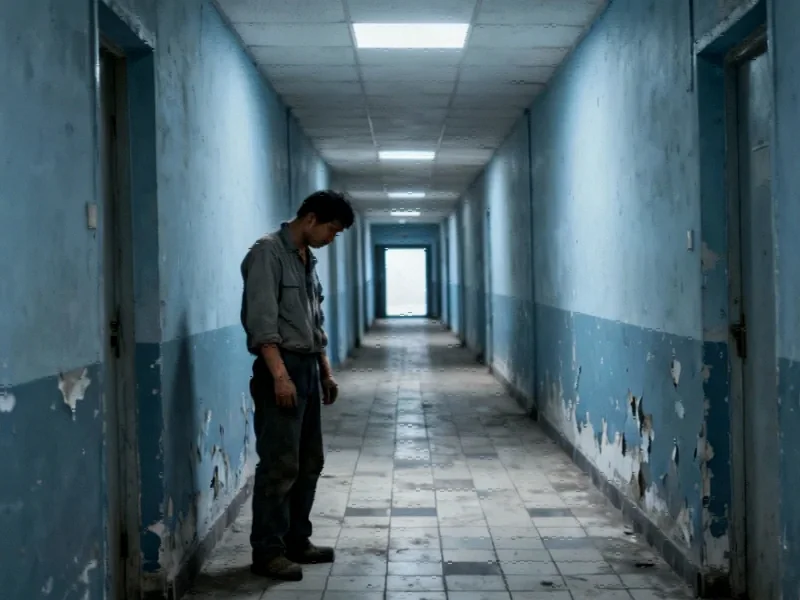The Global Race For Smart Cities
The international competition for technological supremacy has expanded beyond traditional metrics to encompass entire urban ecosystems. Nations worldwide are racing to develop “cloud cities” – metropolitan areas where artificial intelligence, robotics, and data analytics manage everything from traffic flow to public services. While the United States and China lead this charge, Russia has positioned Moscow as its flagship smart city project, aiming to demonstrate technological prowess to the Global South.
However, this ambitious vision faces a fundamental constraint: energy. The very technologies that power smart cities – data centers, AI systems, surveillance networks, and automated infrastructure – consume enormous amounts of electricity. As Moscow accelerates its digital transformation, it’s confronting an inconvenient truth: Russia’s energy wealth doesn’t necessarily translate to reliable urban power capacity.
Moscow’s Technological Aspirations
The Russian capital has aggressively implemented smart city technologies that would seem futuristic just a decade ago. A citywide camera network feeds real-time data to AI analytics systems monitoring traffic and pedestrian movement. Half a million subway riders now experience frictionless travel with facial recognition handling fare payments automatically. Autonomous cleaning machines maintain public spaces, while a sophisticated 3D “digital twin” of the city manages nearly 1,000 square miles of infrastructure.
These innovations represent more than urban convenience – they carry significant geopolitical messaging. By showcasing robots like “Pixel” cleaning its streets, Moscow presents itself not as a nation embroiled in conflict but as a forward-looking metropolis embracing technological transformation. The city has hosted international forums like the BRICS Urban Future Forum, positioning itself as a hub for exchanging ideas on robotics and AI-powered urban development.
The Energy Equation
The International Energy Agency projects global data center electricity demand will more than double by 2030, exceeding Japan’s current total consumption. When combined with cryptocurrency operations, this demand could surpass 1,000 Terawatt-hours by 2026. Analysts warn that by 2027, 40% of AI-focused data centers worldwide could face power constraints.
For Moscow, this creates a critical challenge. The city’s power system may encounter capacity problems in the near term, despite Russia’s status as an energy-rich nation. The concentration of digital infrastructure exacerbates this issue – approximately three-quarters of Russia’s commercial data-center racks are located in Moscow and its surrounding region. This geographic clustering means that increasing national power generation won’t necessarily solve urban energy shortages if the electricity is produced hundreds of kilometers from where it’s needed.
Recent industry developments highlight how Russia’s smart city ambitions are confronting mounting energy challenges that threaten to undermine technological progress.
Infrastructure Investments And Limitations
Russian authorities have planned several measures to address Moscow’s power needs, including approximately 950 MW of new thermal units in or near the city. Two 750 kV transmission lines are scheduled for completion by 2030, followed by a 1.5 GW high-voltage DC link to import power from the Novovoronezh nuclear plant by 2032. These projects carry a price tag exceeding $5 billion but may prove insufficient given the accelerating pace of digital demand.
The national “General Scheme to 2042” aims to add 88.1 GW of gross generation capacity, but retirements of aging plants will reduce the net gain to about 45 GW. More fundamentally, Russia faces significant hurdles in actually delivering these capacity additions. With the Central Bank key rate at 17% and the economy slowing, attracting private investment to the low-margin power generation sector has become increasingly difficult.
These infrastructure challenges coincide with other related innovations in computing that could further strain energy resources if implemented at scale.
Geopolitical And Economic Constraints
Russia’s capacity to power its digital ambitions is further complicated by several structural factors. Defense spending has surged to approximately 6.3% of GDP, straining public finances. The government’s 2025 deficit target of 1.7% of GDP was effectively reached by mid-year, limiting resources available for energy infrastructure.
Meanwhile, electricity exports to China have collapsed, dropping over 70% from 2024 levels. Ironically, Russia’s system operator now openly discusses importing power from China to maintain supply in eastern regions while new plants and transmission lines are constructed. This represents a significant reversal for a nation that has long positioned itself as an energy exporter.
The security situation introduces additional vulnerability. Ukraine’s drone attacks have already inflicted substantial damage on Russia’s energy infrastructure, creating concerns about the reliability of future power supplies. Transmission lines and substations represent potential targets that could disrupt Moscow’s energy lifelines.
Broader Technological Context
Moscow’s energy challenges emerge amid rapid global technological advancement. From recent technology updates addressing hardware stability issues to breakthroughs in computational methods, the digital landscape continues to evolve in ways that typically increase power consumption.
Even seemingly unrelated market trends in entertainment and gaming contribute to rising energy demands as consumers expect increasingly sophisticated digital experiences.
The Fragile Future Of Cloud Cities
Moscow’s vision of becoming a leading “cloud city” represents both an ambitious technological goal and a significant gamble. The infrastructure requirements extend beyond simply building data centers and deploying sensors – they demand reliable, substantial, and locally available electricity generation that can support 24/7 operations.
Current projections suggest Russia’s planned capacity additions may arrive too late and prove insufficient to meet accelerating digital demand. The concentration of data infrastructure in Moscow creates a particular vulnerability – unlike manufacturing or extraction industries that can be distributed across the country’s vast territory, data centers naturally cluster near population centers and connectivity hubs.
As industry developments in artificial intelligence continue to demonstrate, the relationship between technological advancement and practical implementation grows increasingly complex, with unexpected challenges emerging even in mature systems.
Conclusion: Powering Digital Ambitions
Russia’s smart city aspirations highlight a fundamental tension between technological ambition and practical constraints. While Moscow has made impressive strides in implementing AI and automation throughout urban systems, the energy foundation required to sustain and expand these initiatives appears increasingly precarious.
The coming years will test whether Russia can overcome its energy challenges to realize its digital vision, or whether Moscow will join other cities worldwide that have discovered that technological sophistication ultimately depends on reliable, abundant power. The outcome will determine not just Moscow’s future as a smart city, but Russia’s position in the global technological landscape.
This article aggregates information from publicly available sources. All trademarks and copyrights belong to their respective owners.
Note: Featured image is for illustrative purposes only and does not represent any specific product, service, or entity mentioned in this article.


